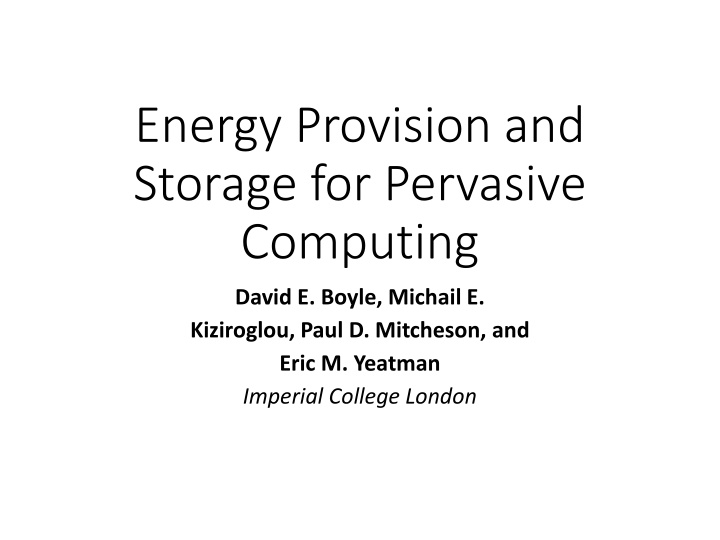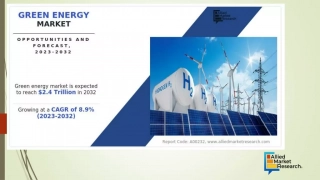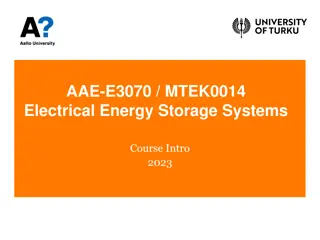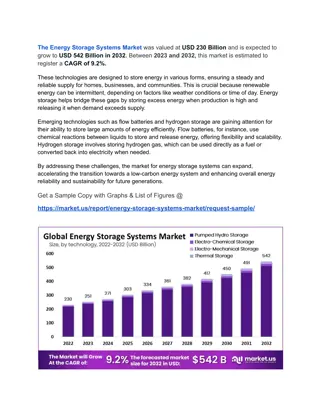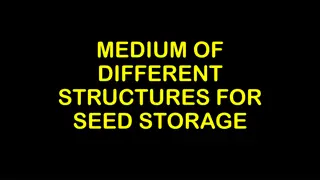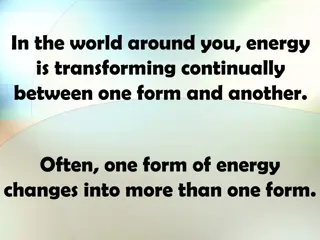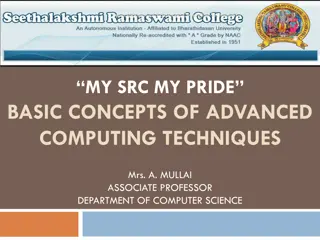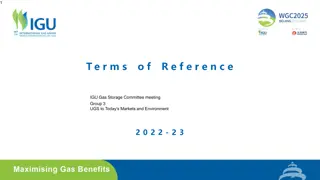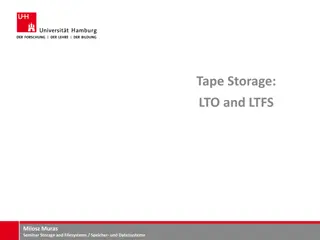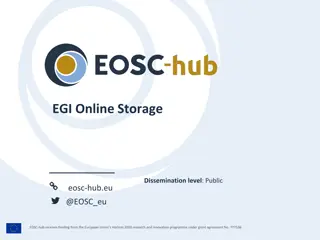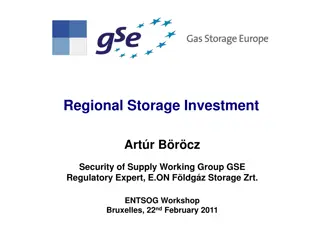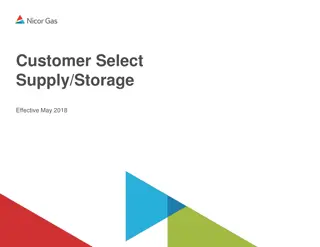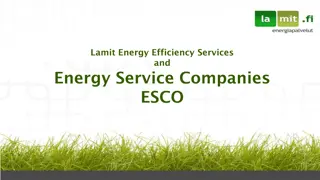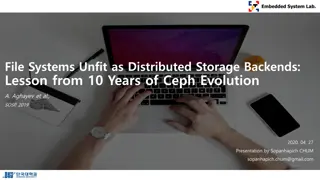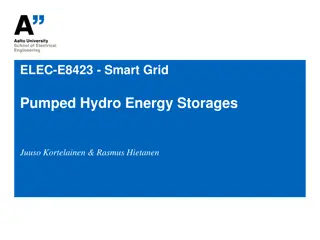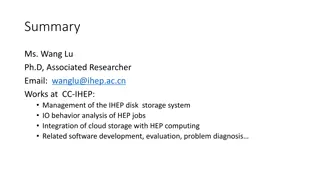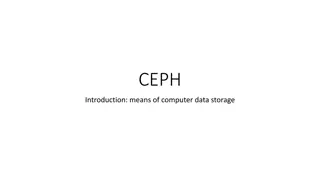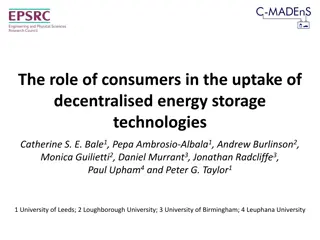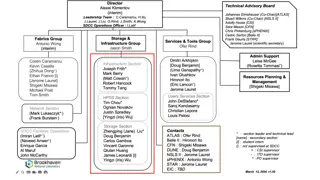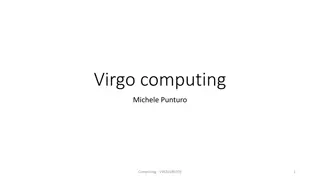Energy Provision and Storage for Pervasive Computing Overview
The energy design space for pervasive computing is expanding with various alternative technologies like wireless power transfer and ambient energy harvesting. Factors such as device needs and emerging power technologies need to be considered. Explore the potential of inductive power transfer and resonant inductive coupling for next-generation energy solutions in pervasive computing.
Download Presentation

Please find below an Image/Link to download the presentation.
The content on the website is provided AS IS for your information and personal use only. It may not be sold, licensed, or shared on other websites without obtaining consent from the author.If you encounter any issues during the download, it is possible that the publisher has removed the file from their server.
You are allowed to download the files provided on this website for personal or commercial use, subject to the condition that they are used lawfully. All files are the property of their respective owners.
The content on the website is provided AS IS for your information and personal use only. It may not be sold, licensed, or shared on other websites without obtaining consent from the author.
E N D
Presentation Transcript
Energy Provision and Storage for Pervasive Computing David E. Boyle, Michail E. Kiziroglou, Paul D. Mitcheson, and Eric M. Yeatman Imperial College London
Main points: 1. The energy design space for pervasive computing is growing. 2. More methods and tools are needed to navigate this space. 3. Several factors (e.g., device needs, emerging wireless and battery power technologies) should be considered when developing these methods.
Factor #1: There are reasons to consider technologies other than batteries, but batteries won t become irrelevant. Emerging alternatives: Wireless power transfer (inductive and radiative), Ambient energy harvesting (solar, wind, RF, etc ), acoustic energy transfer, mobile charging vehicles.... Remaining need for on-board storage: The alternative energy sources may fail or be unreliably available. Buffering of harvested energy Battery limitations: Finite energy supply, environmental concerns, inconvenient or impossible replacement, self- discharge
Factor #2: The characteristics and needs of the powered devices will be highly variable.
Factor #2: The characteristics and needs of the powered devices will be highly variable.
Factor #3: Many new technologies are becoming increasingly viable, each with their own set of strengths, and limitations. Emphasized in these slides: Wireless power transfer Non-radiative and radiative Ambient energy harvesting
Inductive power transfer Example: Qi wireless charging Magnetic induction: A magnetic field is generated by applying alternating current to a coil inside the charger. The magnetic field can induce voltage across a coil in the charged device, if: The device is close enough (i.e., within one coil diameter), and, The device is appropriately aligned with the charger. Image credit: https://www.wirelesspowerconsortium.com/blog/
Resonant inductive coupling Example: WiTricity (for powering devices and vehicles): Builds upon magnetic induction, but expands the range (> 4x coil diameter), and allows for charging of multiple devices at once. Source: http://witricity.com/technology/
Radiative Wireless Power Transfer Example:Energous Energy is transferred through electromagnetic waves (for example, RF waves). Chief advantages: Charging range on the scale of meters Receivers may be moving. Transmitter embedded below TV Chief disadvantages: Limits on safe exposure to electromagnetic waves. Green battery icons indicate devices that may contain receivers and are within range. http://energous.com/technology/transmitters/
Ambient energy harvesting Examples: Sensor nodes powered by Solar energy, or Ambient RF Sources: J. Xiaofan, J. Polastre, and D. Culler, Perpetual Environmentally Powered Sensor Networks, Proc. Fourth Int l Symp. Information Processing in Sensor Networks (IPSN), 2005, pp. 463 468; Parks, A. N., Sample, A. P., Zhao, Y., & Smith, J. R. (2013, January). A wireless sensing platform utilizing ambient RF energy. In Biomedical Wireless Technologies, Networks, and Sensing Systems (BioWireleSS), 2013 IEEE Topical Conference on (pp. 154-156). IEEE.
Ambient energy harvesting: Considerations for modeling Power Density: Temporal variabililty Unpredictability Stressed as an area where new tools are especially needed. Sources: J. Xiaofan, J. Polastre, and D. Culler, Perpetual Environmentally Powered Sensor Networks, Proc. Fourth Int l Symp. Information Processing in Sensor Networks (IPSN), 2005, pp. 463 468; Parks, A. N., Sample, A. P., Zhao, Y., & Smith, J. R. (2013, January). A wireless sensing platform utilizing ambient RF energy. In Biomedical Wireless Technologies, Networks, and Sensing Systems (BioWireleSS), 2013 IEEE Topical Conference on (pp. 154-156). IEEE.
Factor #4: On-board storage options include both batteries and supercapacitors. Batteries: High energy density (can store a lot per unit volume); relatively low power density (low energy transfer rate). Supercapacitors: Low energy density, high power density
Factor #4: Which should be used for pervasive computing? Batteries: for long lifetime Supercapacitors: for quick recharging Hybrid solution: supercapacitors buffering batteries
Return to main points: 1. The energy design space for pervasive computing is growing. (Wireless power transfer, ambient energy harvesting ) 2. More methods and tools are needed to navigate this space. (Especially to deal with variability and unreliability of ambient sources) 3. Several factors (e.g., device needs, emerging wireless and battery power technologies) should be considered when developing these methods. (Range, safety, reliability of source, energy vs. power density)
